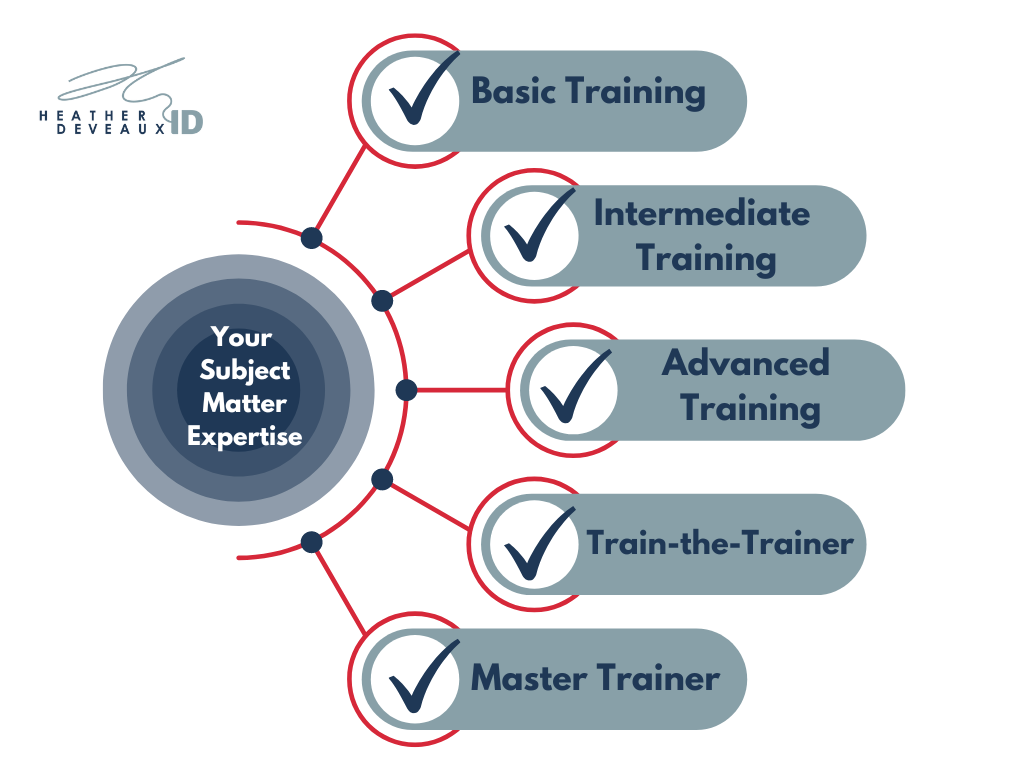Franchise Your Course with These Three Important Steps
Franchise your course with these three important steps
You’ve got an idea for a course. And you want to sell that course to others. But you don’t want to sell that course by yourself. So you decide to create a business model where others can buy your course and re-sell it as their own. That’s called franchising. And if you want to run a business model like this using online courses or in-person training models, there are three important things you need. If you’ve never heard of this business model before, think first aid instructors, safety services, and corporate training conglomerates where training materials are provided to the trainer.
Why Should You Consider a Franchise?
Creating a franchise training model is not right for all businesses so how can you know if it’s right for you? First, consider the size of your audience. If you provide training to local organizations only and have no market beyond your region, it doesn’t make sense to train more people locally to run your courses. If, however, you are dominating on the east coast and want to expand to the west coast, franchising can work for you. Or, say you are a solopreneur wanting to build an online business school. That’s great, but you have to learn how to find, sell and service your first clients before you can learn to find, sell and service franchisees. One thing at a time.
Franchise training works for organizations that have a lot of ground to cover and don’t necessarily have the capacity or interest in building internal training teams. It works for some non-profit organizations, as well as for-profit organizations, but building out a team of franchisees means creating support for those franchisees that goes beyond simply creating a train-the-trainer program. Do you have the means to support such endeavors?
Next, consider whether or not you need to franchise or if you simply need to increase the size and reach of your sales team. By creating a franchising system, you essentially give up a lot of control with regard to how information is delivered and how your franchisees run their organizations. Sure, there are guidelines and rules, but that doesn’t mean things run the way you want all the time. Consider the level of control you are willing to give up by handing out your training materials to a franchisee.

Three Important Things to Do Before You Franchise Your Course
You’ve made the decision to franchise your course and build out this vertical of your business model. Now you need to do three things. First, you need to ensure your initial training package is solid. Second, you need to create a train-the-trainer package for your first wave of franchisees. Third, you need to create a master train-the-trainer package to develop top-level instructors or trainers. In many cases, especially in small businesses, the top-level instructor is the business owner. You need a bible for yourself. Let’s break this down.
Initial Training Package
In any good franchise training business, there are three levels of information: basic training, train-the-trainer and master trainer level. You might be tempted to start at the top level and work your way down. Master training needs to ensure the information at the bottom of the ladder is correct. I always start with the initial training package: what the customer sees.
This gives you an opportunity to review and adjust training to make sure it’s as effective as possible. In some cases, a complete re-write or re-organization of materials is required to set the course up to be franchisable. I didn’t just make that word up. Content has to be scalable. And most clients I work with are used to delivering content on their own. They don’t stop to consider how others might interact with the information at the instructor level.
I recently worked with a client who sent me an instructor guide – which was a nice perk since many organizations don’t have them anymore – but it was effectively useless because it was all mish-mashed thoughts and half sentences from the person who teaches the course week in and week out. I had to rewire the entire course so anyone other than the original instructor could pick it up and teach it. But in order to create a better instructor guide, the basic content has to be correct.
Train-the-Trainer Package
The next step in creating franchise-level training is to consider the content from the instructor’s point of view. As I just said, when instructors own their content, they tend to get in the weeds pretty quickly, developing their own routines and ways of delivering the training. But those habits are useless to anyone else who wants to teach the course. Many subject matter experts attempt to create their own train-the-trainer program by developing systems and processes that mirror what they’ve done themselves, but that’s not effective either.
In order to create a useful train-the-trainer program, you have to essentially create a training program that not only teaches people the content they need to turn around and teach others, but you have to teach them HOW to teach it. And if I’m being honest, your way might not be the best way. In fact, it’s often not the best way because you’ve been doing it the same way for so long that WHY you teach it that way has long since been lost. Fresh eyes and a lens of learning can pull information back to where it needs to be.
An effective train-the-trainer package is not a set of instructions, contrary to popular belief. It’s a guide. Train-the-trainer programs leave room for HOW outcomes are achieved while still ensuring they are achieved. They leave room for interpretation and interactions with students and learners, and they provide clear and measurable activities to ensure the outcomes are met. Most subject matter experts focus on the information and not on how the information should be distilled.
Master Trainer Package
And now the water gets a little muddier. When it comes to creating a franchise system for your course, you need one more container: the master trainer package. This is the training package that you use, or someone in your organization uses, to TRAIN the other trainers. The top of the ladder has to start somewhere and usually, it starts with the owner or original trainer. Creating a master training package means creating a bible of sorts for your organization. This is where you decide and determine the how and why of teaching. If you want to have a ladder system for your trainers to climb, there needs to be a robust training package for them as you franchise your course.
And yes, if this sounds like a multi-level marketing scheme, you’re not wrong. What did you think franchising was? It’s a legal form of multi-level marketing, to be sure. But because we tend to think of McDonald’s or Burger King instead of Avon or Tupperware, we let it slide. But the way in which these training systems are developed is essentially the same thing. You want to create a framework whereby you get paid for providing a product without having to sell or deliver that product by yourself. Sorry to burst your bubble. Let’s keep going.
A master training package outlines how instructors become more senior instructors and also provides the training materials to become more senior instructors. Typically, one does not become a master trainer without some level of experience so many organizations will require a certain number of years or courses taught at the instructor level to become a master trainer. Oh, and you should have a solid understanding of the ins and outs of the material to turn around and train others to be new instructors. But that comes later.
How Long Does it Take to Franchise a Course?
There are two answers to this question. The first answer is that it can take 9-12 months to create the training materials required for all three levels of a franchised learning system. The second answer is it depends on how long it takes you to set up the internal systems and frameworks to actually distill the information.
My instructional design services provide fast, efficient, and effective training materials that you can use to franchise your training. Each segment of the process takes about 3 months: basic, train-the-trainer and master trainer each take 3 months. That’s the easy part. The hard part is putting the systems and processes in place within your business to support the franchise once it’s up and running.
Because of this, clients often hire me to provide additional materials, such as operations manuals, internal training for onboarding and offboarding, as well as customer service training to develop systems to provide support to the franchisees. At all levels, basic and train-the-trainer materials are required so an organization can be self-sufficient without needing me to come back and provide support at every turn.
If you want to franchise your course, give yourself at least 18 months to get it off the ground. And if you want help, let’s have a chat about what this looks like for you and your business.







